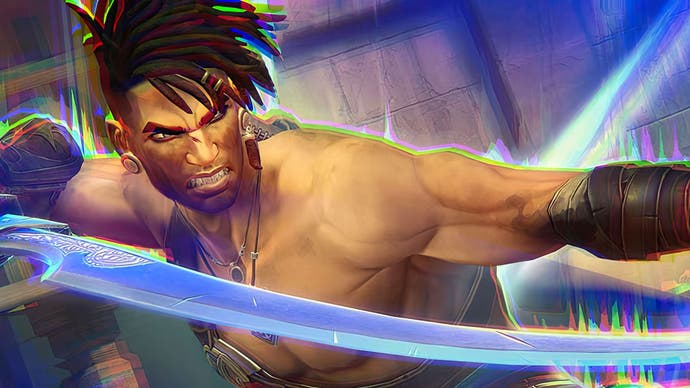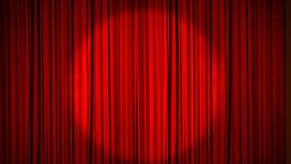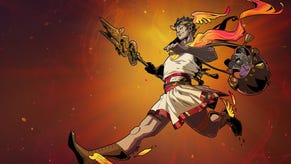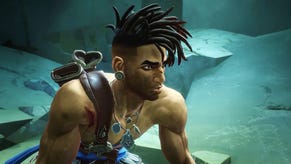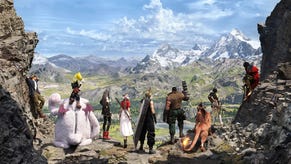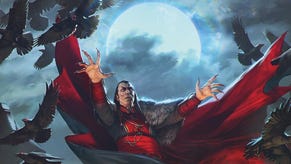Prince of Persia: The Lost Crown is simply beautiful across all platforms
Highly accomplished on PlayStation, Xbox, Switch and PC.
With Prince of Persia: The Lost Crown, UbiSoft has completely eschewed its typical open world formula, instead choosing to narrow its focus building a side-scrolling, exploration-driven platform game - and it might just by my favorite thing the publisher has released in the last ten years. The Lost Crown is not pushing cutting-edge visuals, instead focusing on delivering a supremely polished, ultra smooth game that perfectly leverages every platform it has shipped on. That's right, no matter which platform you might choose to play this game on, you can expect something special.
The Lost Crown begins a new chapter in the storied history of Prince of Persia - and for UbiSoft Montpellier, the studio behind the game. Montpellier was previously responsible for the creation of Rayman Origins and Legends over a decade ago and I've awaited their return in the platforming space for quite a while. The Lost Crown does not disappoint. Compared to Rayman, the team has shifted towards a search/action design that tasks you with exploring a colossal, interconnected map while gaining abilities necessary to further your progress. Yes, there are passing resemblances to Metroid and indeed 'Vania - a genre that has perhaps worn out its welcome in recent years - and I was skeptical going in but in time, I became hooked.
Platforming ramps up beautifully with players asked to navigate increasingly intricate rooms and puzzles using a mix of jumps, dashes, wall runs and more. Just running through the world is a joy. Combat too, which is primarily melee based, is fast-paced and challenging - playing as Sargon, a warrior sworn to protect the Prince of Persia, enemies can wipe you out faster than you'd expect. You'll need to know how to evade and parry if you want to survive - the extra stakes keep you on your toes.
Beyond this, unlike most games in this genre, the storytelling is surprisingly compelling. It plays with time tropes, as you might surmise, but it's good fun - when you encounter someone that arrived just hours earlier only to discover they've been there for weeks, months or years it creates a mystery you'll want to see to the end - or at least, I certainly did. The key here is that the action is excellent, the level design is top-tier and fresh, the world itself is interesting to explore, the atmosphere on point and the story is actually intriguing.
From a Digital Foundry perspective, however, one of the most surprising aspects of The Lost Crown is its engine - UbiSoft has a full suite of internal technologies at its disposal, including the UbiArt Framework used in Rayman - but this new game leverages the Unity Engine instead. This is neither good nor bad, per se, but it is interesting given Ubi's resources. Historically, multiplatform Unity games have produced uneven results in our tests with the Switch versions typically suffering but, in this case, UbiSoft has done a remarkable job.
The visual makeup itself is simple but effective. It's very much a game that follows tried and true rendering paradigms. There's no ray tracing here, no cutting-edge visual effects or anything like that - but they're not really needed. Instead, it's about creating a strong aesthetic within the constraints of their target - which, if I had to guess, is Nintendo Switch.
Given the camera angle, the team has managed to dial in a suitable level of detail. Models are not exceptionally high-poly but still well-detailed. Texture work is designed to convey a painterly style rather than realism. Lighting is entirely baked yet still approximates things like light bounce to a rough degree. All versions feature dynamic shadows (including self-shadows) and there are plenty of dynamic lights and shiny surfaces within. The backgrounds feature a nice sense of depth and give the impression of exploring a large space.
Animation is stylised and over the top with elements like the running animation recalling Rayman's sense of movement plus there are some slick sequences used to accentuate Sargon's movement and finesse. This is an example of the development team dialing in a very specific style then nailing it. The goal was never to push technical boundaries - it was to create something that operates smoothly and consistently within their visual framework. Sometimes high performance, responsiveness and a cohesive design makes the most sense.
On the console side, The Lost Crown is available on basically every console available including current and last-generation machines but our focus was on current-gen consoles, Switch and PC. When playing on PlayStation 5 or Xbox Series X, you're in for a treat - The Lost Crown supports up to native 4K at 120 frames per second. Granted, you'll need an HDMI 2.1 compatible TV to display this, but trust me, it makes a big difference. 60fps is a walk in the park for PS5 and Xbox Series X, and even at 4K 120, they both acquit themselves well. Xbox sits closer to the full 120fps target, but VRR is a great leveller, and both of the premium current-gen consoles look much alike. If you're sensitive to judder and your display's 120Hz support doesn't extend to VRR, 60fps is essentially a lock and may be preferable.
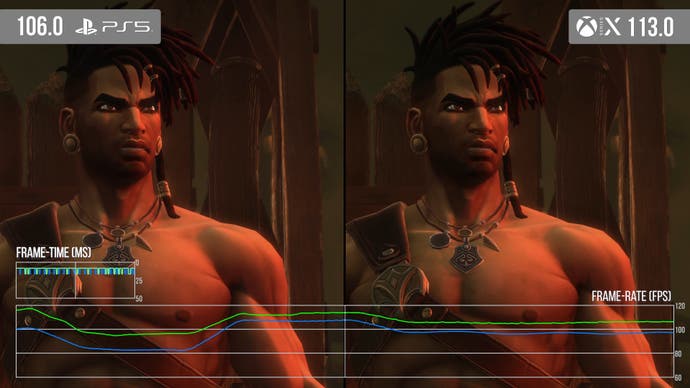
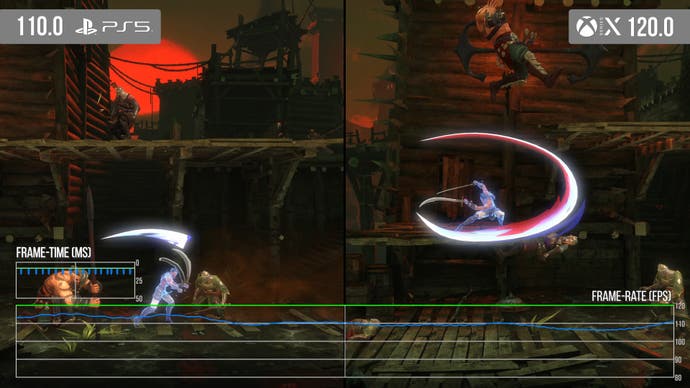
The PC version, of course, also offers this level of performance if your system is capable alongside a slew of other tweaks available - and for image quality purists, The Lost Crown doesn't use TAA, instead relying on older anti-aliasing techniques like FXAA and SMAA for a crisper look. Consoles too are using post-process AA but at these resolutions and with this style of visual design, it's more than enough. The game is super sharp.
If we move down the stack, Series S is the one question mark from my perspective - this one tops out at 1440p60. It looks great, plays great and is more than adequate I might argue but it feels like the little box could do better. Even if 120fps is off the table, the point about VRR still stands and allowing the game to run above 60 fps on a VRR display would be optimal. The reason I say this is because last generation consoles manage to turn in sharper results. I pulled the PS4 Pro off the shelf just to test this game and found that it runs at a resolution just below 4K - it's noticeably sharper than Xbox Series S. Presumably, Xbox Series X is also sharper.
That doesn't mean the S doesn't have any advantages, it does use higher resolution textures than the last-gen version and loading times are much faster - PS4 Pro has to stop and load at various points where current gen machines do not. Furthermore, cutscenes run at 30fps on PS4 Pro but retain a higher frame-rate on Series S.
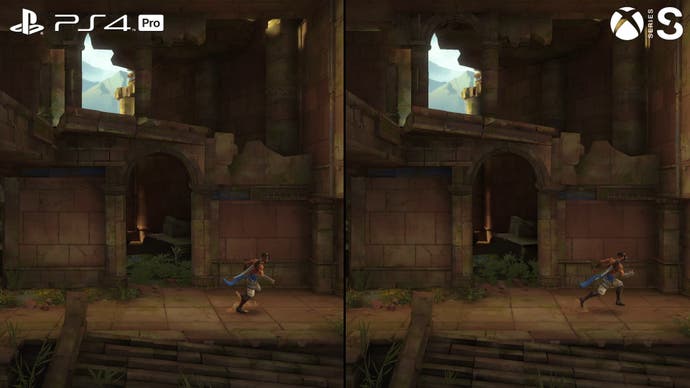
On the flipside, the Switch version turns in a presentation better than expected - you get 1080p60 in docked mode and 720p60 in portable and, honestly, the results are remarkable. Yes, in comparisons, it's clear that visuals have been reduced in spots - textures are all lower resolution, for starters, the reflections featured in many scenes are completely absent and cutscenes tend to run at 30fps rather than 60fps, but beyond this, it's very comparable and smooth. I'd argue this is one of the best-looking games I've played on the Switch - especially when coupled with the Switch OLED.
Switch performance isn't quite perfect, but still impressive. By and large, I do think it holds 60 very well. In busy scenes, frames can drop here and there, but after spending a couple hours on Switch, this is uncommon, and the game feels very polished and fluid overall. Cutscenes can drop - in a couple scenes, they can drop very low due to alpha effects filling the screen, but this is also quite uncommon. Considering what we've been seeing on Switch as of late (particularly with third-party titles), this game feels almost like a miracle for the platform. It's good enough where I could recommend this version if you were interested in playing portably! It's that solid. The same is true of portable mode, of course, which runs just as well as docked without any hiccups or oddities - and may even be a touch smoother.
When you look across the range of platforms, however, the experience is great. While I've highlighted specific areas where performance drops can occur, every platform tested runs well and considering the number of platforms supported, I'd argue this is one of the more impressive multiplatform games we've tested in a while. The fact that it's also highly polished helps even more. It's a glowing example of solid execution. I have no idea what their plans are regarding patches, but the pre-release version I've played gave me zero issues and I'd consider it complete and future-proof. This isn't something you can take for granted these days.

I only have two issues with the game. Firstly, there does not seem to be native support for HDR which is a massive shame. However, on PC, I was able to use a small program designed to force AutoHDR in games and it does indeed work with Prince of Persia. Alas, this is a PC only option so other platforms won't receive the benefit. It's not that it doesn't look good in SDR, mind you, but proper HDR would have been welcome.
Secondly, there's the Ubisoft Account problem. On PS5 and Xbox, I noticed that when starting up for the first time, you are required to login to Ubisoft Connect in order to play the game. Or so I thought. If you disable your internet connection, it lets you in without a Ubi account, but if it detects a connection, you are required to login which, frankly, is exceptionally poor form. At least there's a workaround but it's not cool. Thankfully, on Nintendo Switch, this is not the case - even with a connection, you are allowed to simply bypass the login screen - something to note for those interested in procuring a physical copy. The one benefit of Ubi Connect, I suppose, is cross-platform saves via the cloud. That is actually useful, I must admit.
While the account access aspect is annoying, don't let that turn you away from what is a phenomenal game. If anything, hopefully it will find the success it deserves and help show Ubisoft that it's OK to make more than one type of game again. And the best part is, it seems to be great on every platform. I didn't have time to look at Xbox One, One X or PS4, but as the scalability of the game extends to a great Switch version, I'm not too worried there. In short, this is an exceptional game, beautifully executed, and I highly recommend it.
